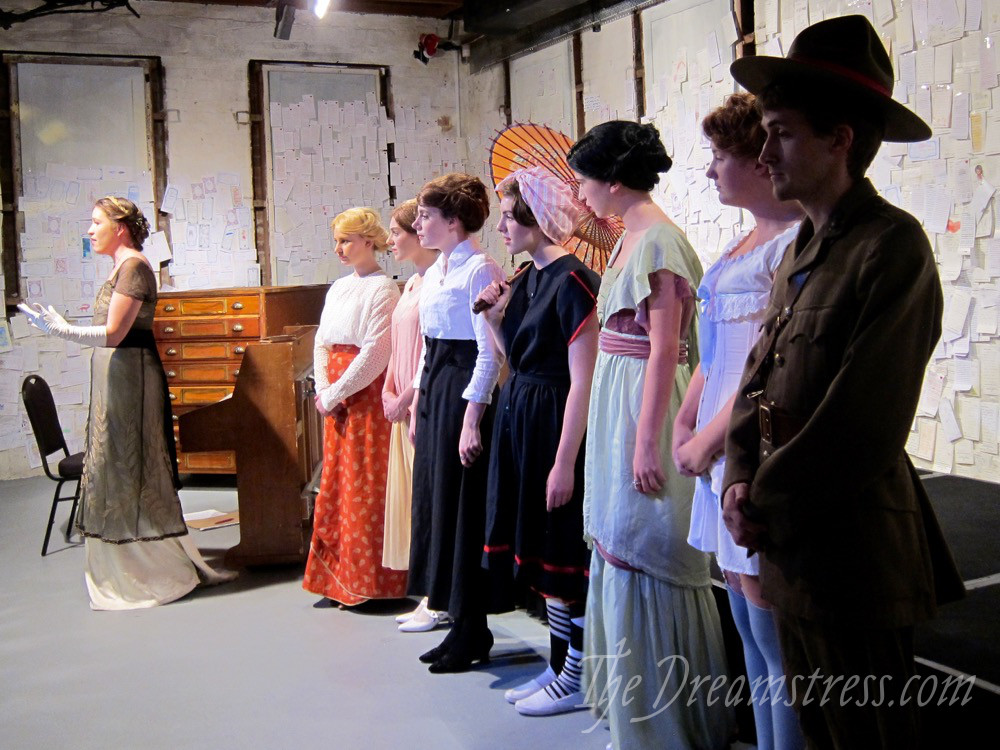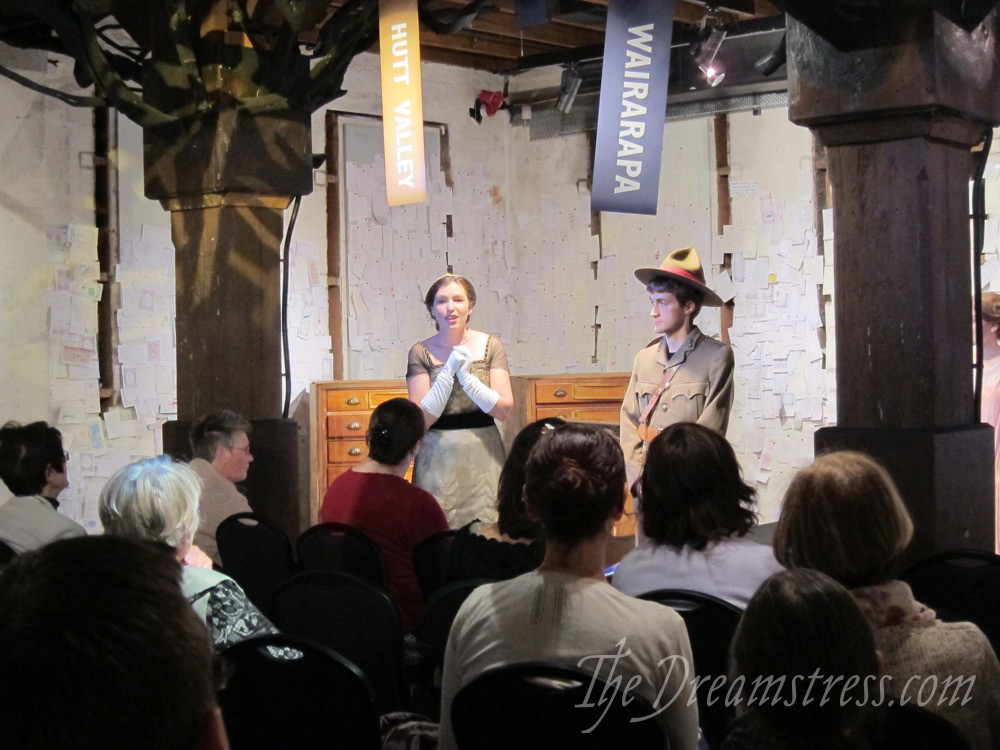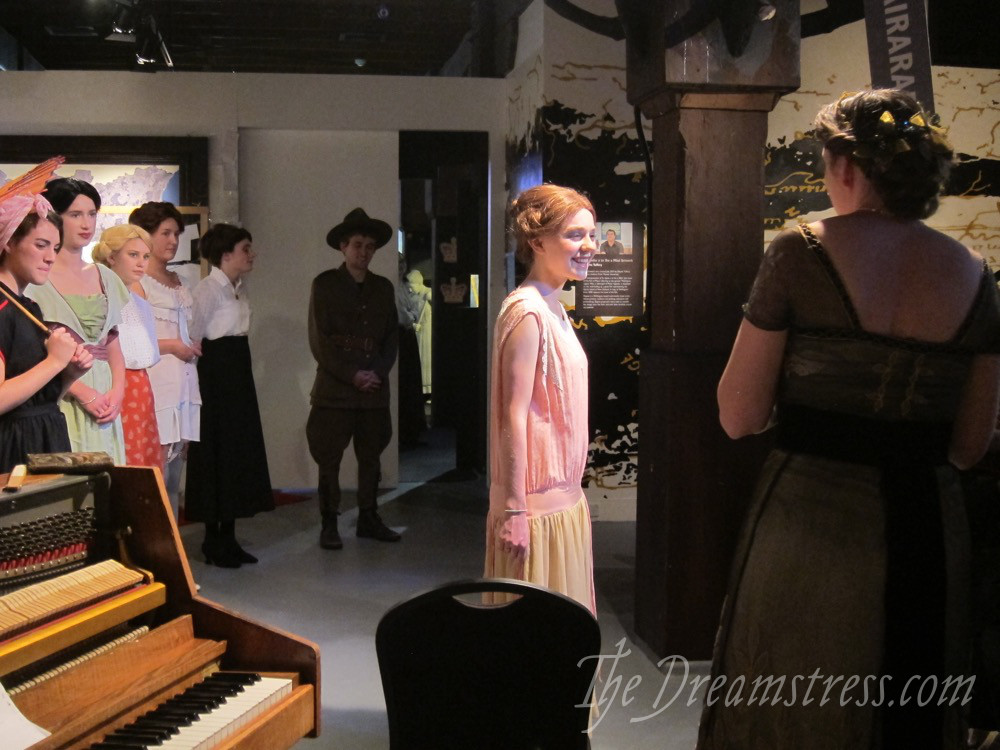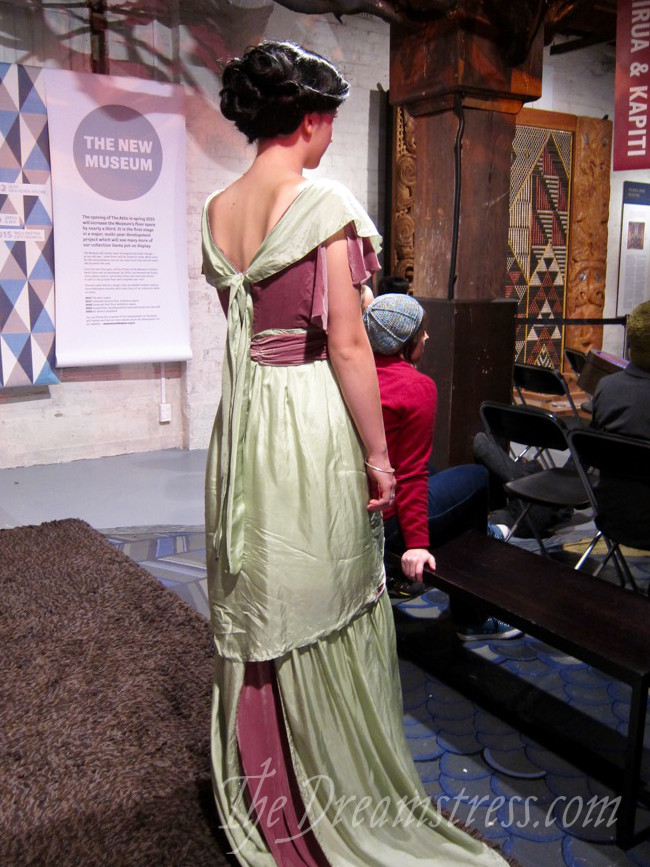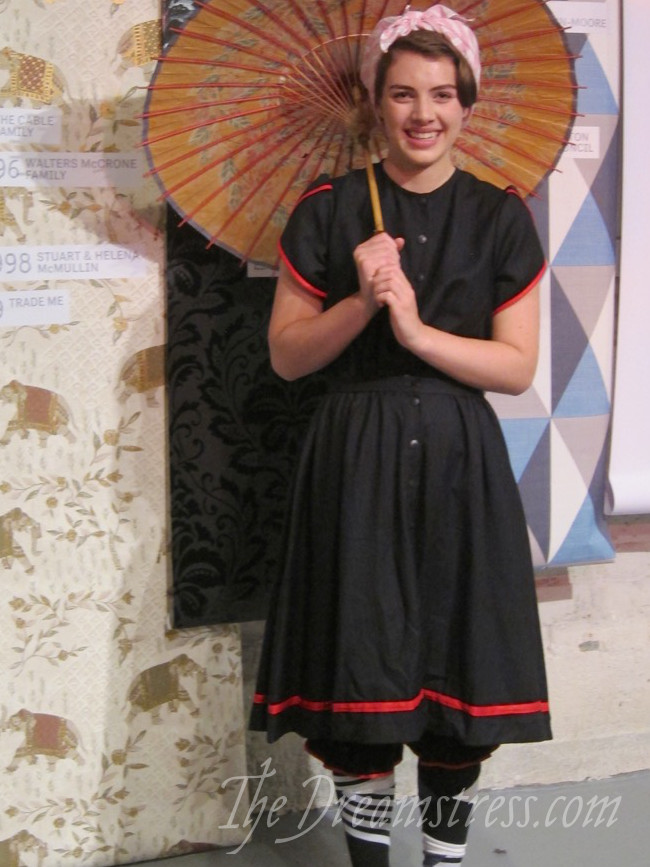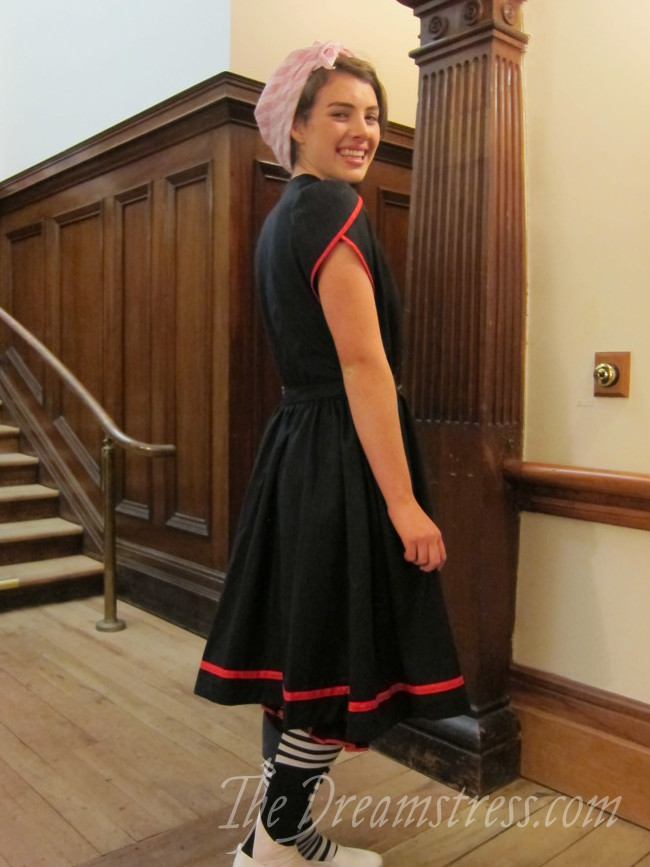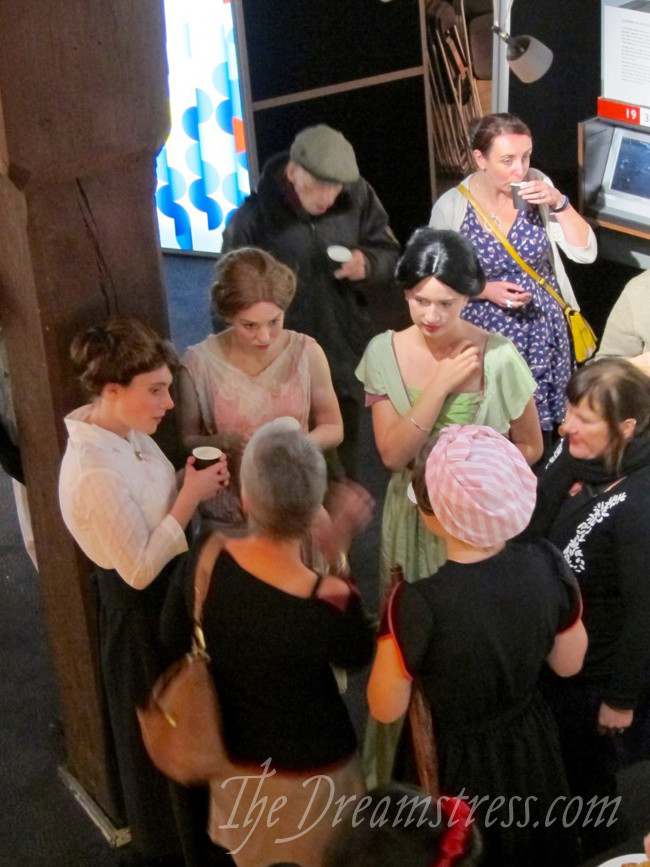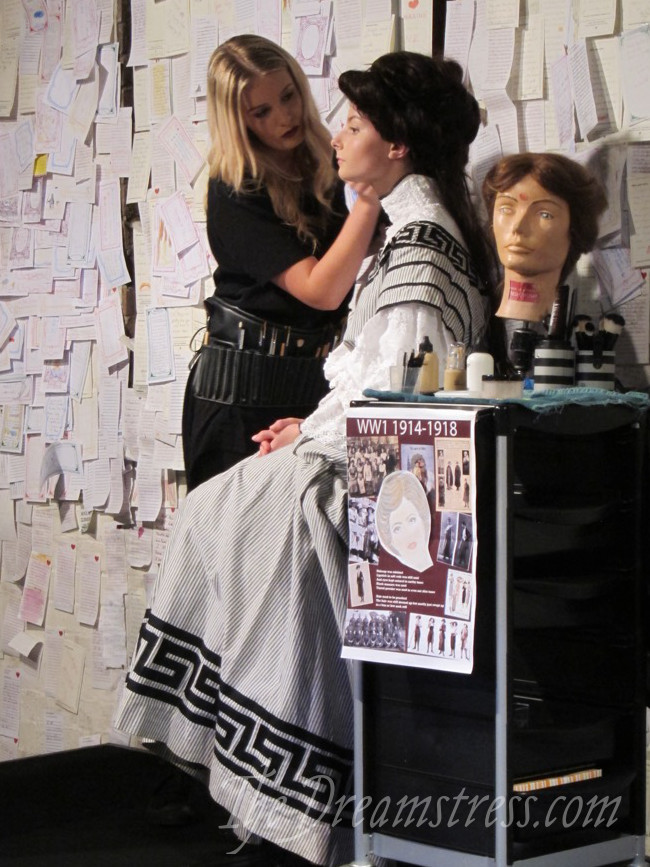Salut ! J’espère que vous allez bien et que ces prémices printaniers, malgré ce déluge incessant (!), vous réchauffent le coeur.
En début d’année, en vue de l’élaboration d’une grade-robe raisonnée, j’avais émis l’idée de fonctionner par tenue. Tout simplement parce que deux choses cousues pour aller ensemble ont plus de chances d’être portées que des pièces isolées. C’est logique non ?
Je suis donc partie que un second jean Ginger (parce que le premier ne peut pas être parfait, ni le second d’ailleurs…) et un patron du magazine La Maison Victor, la blouse Venue.
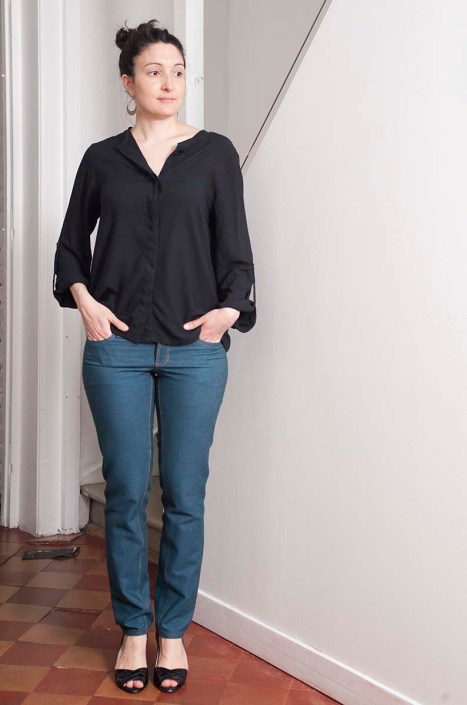 Attention, post avec plein de photos dont des gros-plan de la fameuse double-patte infernale de la blouse Venue ! En espérant que ça puisse aider ;)
Attention, post avec plein de photos dont des gros-plan de la fameuse double-patte infernale de la blouse Venue ! En espérant que ça puisse aider ;)
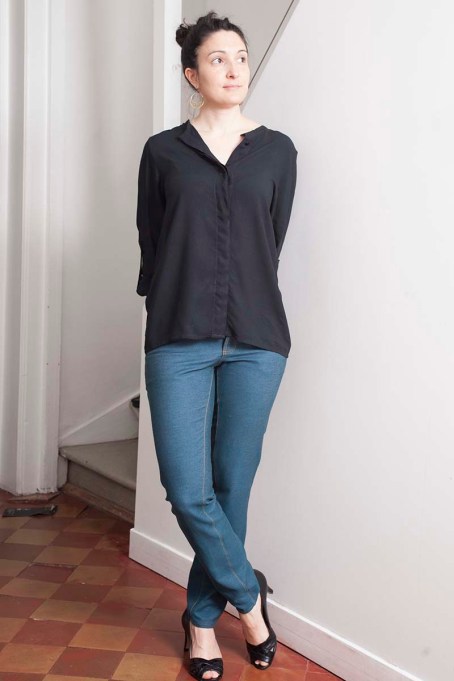 Pourquoi ces deux patrons ? Par ce que le jean Ginger, je le kiffe, vous l’aurez compris. C’est 100% bike-friendly.
Pourquoi ces deux patrons ? Par ce que le jean Ginger, je le kiffe, vous l’aurez compris. C’est 100% bike-friendly.
Cela faisait longtemps que je voulais coudre d’après La Maison Victor, que j’achète depuis le début. J’adore ces magazines, c’est rafraîchissant, c’est très prêt à porter et, perso, c’est ce que j’aime en couture, même si c’est pas d’une originalité dingue. Cela fait des vêtements faciles à porter, adaptés au quotidien.
Cette fois-ci, je suis partie sur la taille 8 du jean Ginger de Closet Case Patterns, soit une taille de plus que le précédent. Mes mensurations dataient un peu et j’ai forci du popotin.
C’est la version A taille normale avec les jambes skinny de la version B (pas très skinny sur moi xD, il faudra peut-être repasser en taille 6 sur le mollet ?)
Le tissu est un jean stretch de chez Rijs Textiel. Il est léger et souple, très souple. J’en suis pas dingue, mais c’est d’un confort!
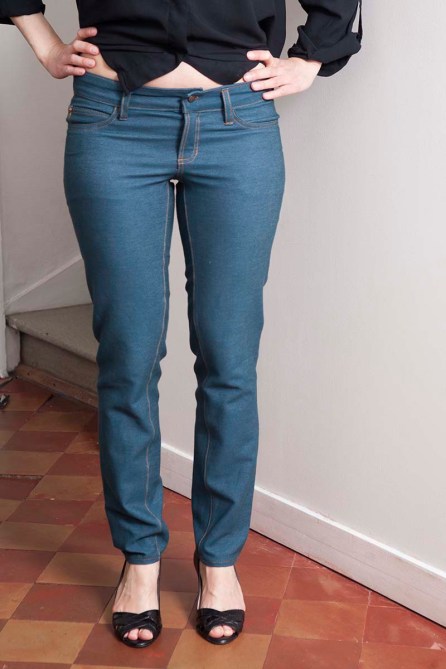 En fit, j’ai rien fait si ce n’est le traditionnel « ajustement pour dos cambré » où j’ai enlevé 3 cm à l’empiècement dos. Mais sur cette photo, on voit que qu’il faudrait aussi raccourcir un peu la fourche (les plis sous la braguette), il y a « trop » de tissus au niveau du devant. Ca, c’est la galère des dos cambrés. On a un tour de hanche qui nous fait choisir une taille plus grande mais, au final, il y a trop de matière au niveau de la cambrure mais aussi tout en haut des cuisses… Une histoire de vides et de pleins, que voulez-vous ?
En fit, j’ai rien fait si ce n’est le traditionnel « ajustement pour dos cambré » où j’ai enlevé 3 cm à l’empiècement dos. Mais sur cette photo, on voit que qu’il faudrait aussi raccourcir un peu la fourche (les plis sous la braguette), il y a « trop » de tissus au niveau du devant. Ca, c’est la galère des dos cambrés. On a un tour de hanche qui nous fait choisir une taille plus grande mais, au final, il y a trop de matière au niveau de la cambrure mais aussi tout en haut des cuisses… Une histoire de vides et de pleins, que voulez-vous ?
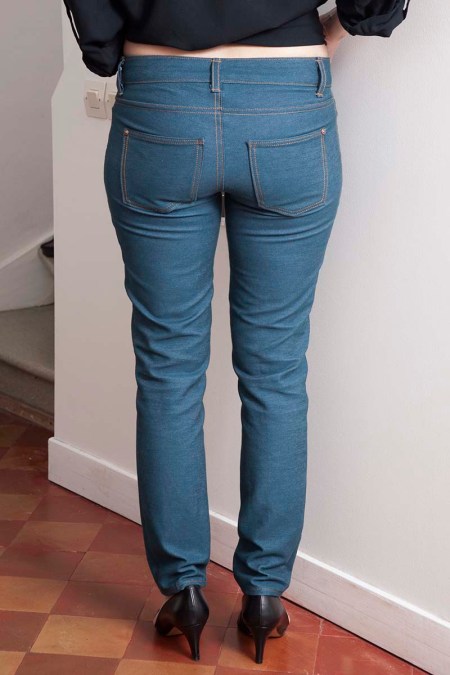 Idem au dos, vous voyez ces moches plis derrière les genoux ? Heather m’a dit que c’était parce qu’il y a avait, encore une fois, trop de tissu à l’arrière de la jambe. Il faut donc que je raccourcisse la jambe dos par rapport à la jambe devant. Normalement, en répartissant l’embu crée, ça devrait le faire.
Idem au dos, vous voyez ces moches plis derrière les genoux ? Heather m’a dit que c’était parce qu’il y a avait, encore une fois, trop de tissu à l’arrière de la jambe. Il faut donc que je raccourcisse la jambe dos par rapport à la jambe devant. Normalement, en répartissant l’embu crée, ça devrait le faire.
Même avec l’ajustement dos cambré, la taille baille encore un peu. Sur le prochain, j’enlève 4 cm.
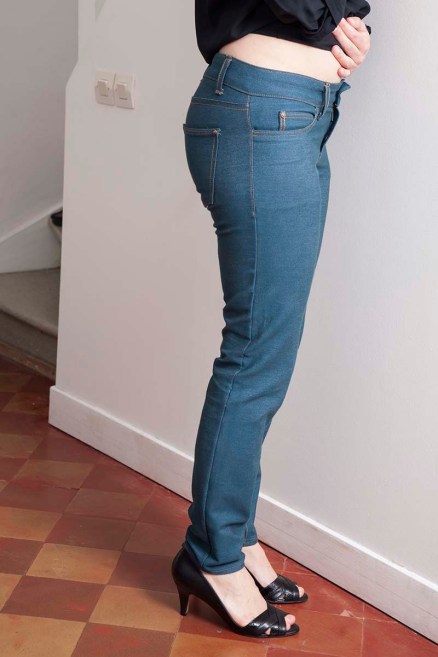 Je tiens le bon bout, je vous le dis !
Je tiens le bon bout, je vous le dis !
Je l’aime bien ce jean, il est confortable ! Il est juste un peu lâche à la taille, mais je crois que c’est ce tissu qui est très stretch.
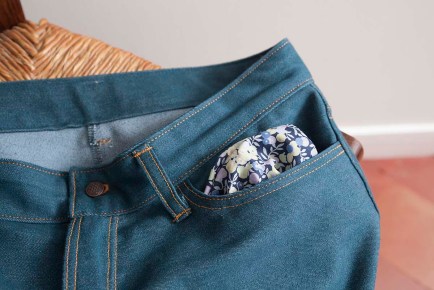 Coucou ! La petite touche surprise dans les poches. Et cette fois-ci, j’ai pas foiré ma boutonnière ;).
Coucou ! La petite touche surprise dans les poches. Et cette fois-ci, j’ai pas foiré ma boutonnière ;).
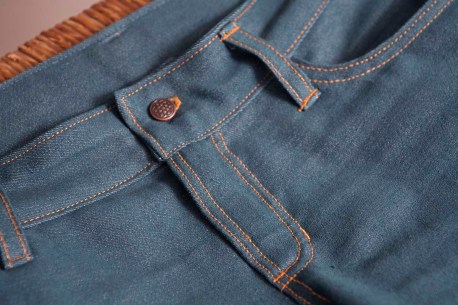 Le tissu étant plus souple, j’ai mieux géré les surpiqûres. Encore une fois, la technique de la braguette de Heather est géniale.
Le tissu étant plus souple, j’ai mieux géré les surpiqûres. Encore une fois, la technique de la braguette de Heather est géniale.
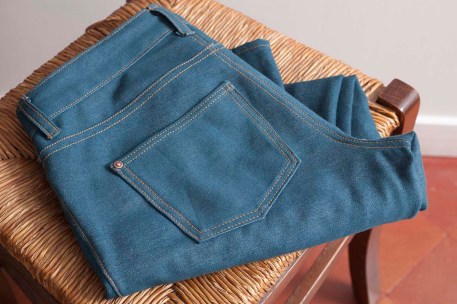 Voilà ! Le troisième est déjà coupé, il sera noir ! J’ai tenu compte des modifs décrites ici, on verra bien !
Voilà ! Le troisième est déjà coupé, il sera noir ! J’ai tenu compte des modifs décrites ici, on verra bien !
Pour celles qui voudraient se lancer, le sew along est top !
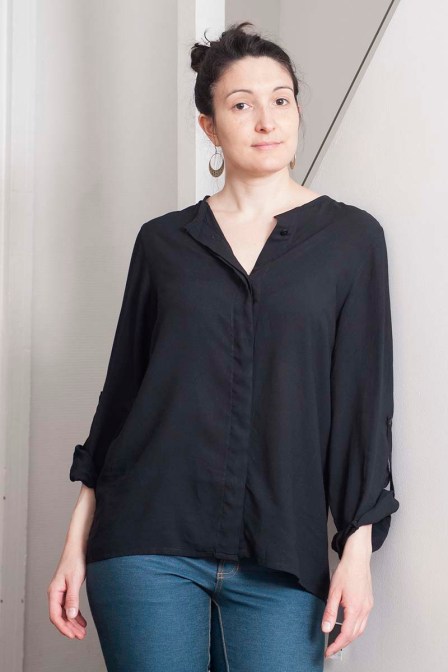
La blouse Venue. Ah, cette blouse ! On m’avait prévenue, « fais gaffe, la double-patte, c’est l’horreur. » Je suis donc partie en connaissance de cause.

Blouse Venue, La Maison Victor, taille 38, réalisée en viscose noire de chez Cousette, passepoil lurex au dos. Cette viscose est juste divine, elle a un tomber génial, elle est très agréable à porter et reste facile à travailler. Et elle ne coûte pas un prix de dingo (9,5 le m).
Effectivement, cette double-patte a été un peu galère parce que c’est simplement mal expliqué. Alors, il faut savoir que ce magazine est flamand, la traduction ne donne pas toujours des tournures heureuses. Déjà, ça commence avec « Collez le tissu. »
Collez le tissu.
.
.
Mouiiiii….
Et ting ! Eclair de génie, « AAAAAaahh, entoilez le tissu. » ^^’
Donc j’ai eu très peur, moi qui avait acheté tous les magazines, qui me faisais une joie de commencer à coudre ces modèles. Fausse peur heureusement ! J’ai fait la patte au plus logique, ça permettait de boutonner, c’était le principal. Passé cet imbroglio d’explications et de schémas pas clairs auxquels je n’ai absolument rien compris, ça a été tout seul !
J’ai même d’ailleurs été ravie des techniques de montage qui permettent des finitions intérieures impeccables. Ci-dessous, voici deux photos de l’empiècement d’épaules vu sur l’envers de la blouse :
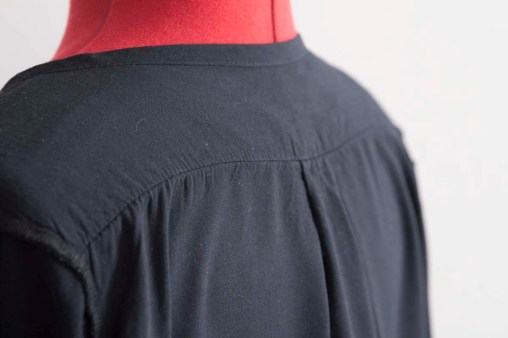
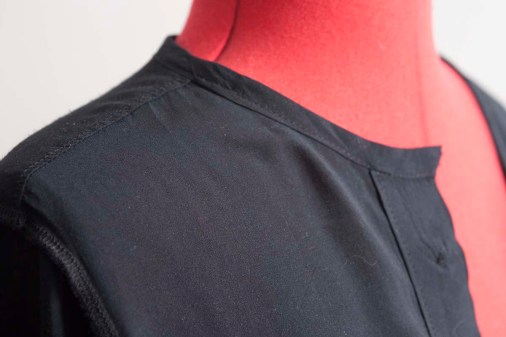
C’est hyper propre, je suis fan. Alors, l’ironie suprême, c’est que c’est une technique digne de la cuiller de bois de Mme Burda, du style vous retournez telle épaisseur sur telle autre dans l’autre sens à moitié sur l’endroit pour retourner sur l’envers. Mais là, les explications et le schéma étaient très clairs. Allez comprendre. Ou c’est peut-être moi, hein ^^’
Idem pour le montage des fentes de manches :
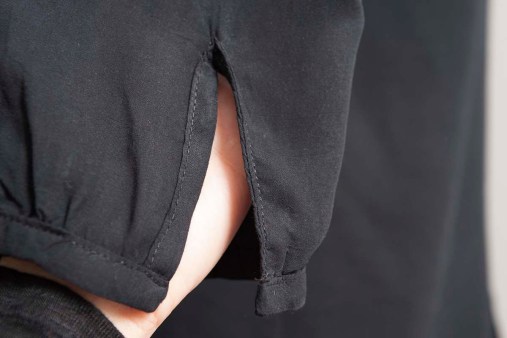
Il se fait fente complètement ouverte, où vous travaillez vos coutures à l’horizontale, ce qui est beaucoup plus facile et agréable à réaliser.
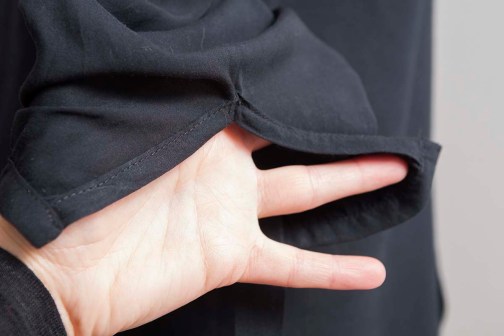 Malgré cette incompréhension du début, je reste très enthousiaste sur ce magazine et j’ai déjà récidivé, mais je vous en parlerai plus tard !
Malgré cette incompréhension du début, je reste très enthousiaste sur ce magazine et j’ai déjà récidivé, mais je vous en parlerai plus tard !
Je glisse quelques photos en gros plan de la fameuse double-patte infernale, on ne sait jamais, ça peut aider ! (justement d’ailleurs, il n’y a pas beaucoup de photo de la patte dans le magazine, je pense que c’est aussi pour ça que c’est obscur car une fois qu’on a saisi le truc et qu’on décide de boycotter leurs explis, ça va tout seul !)
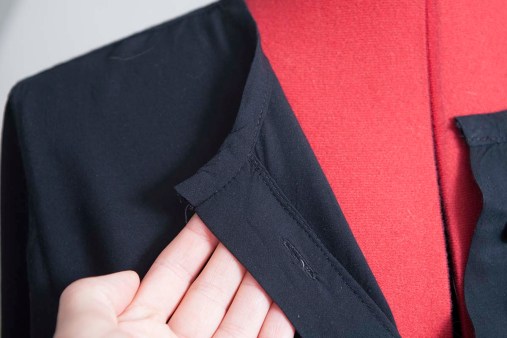
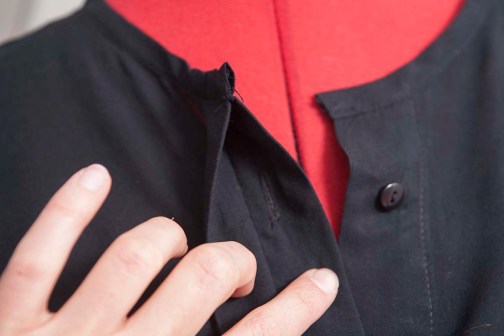
Boutonnières :
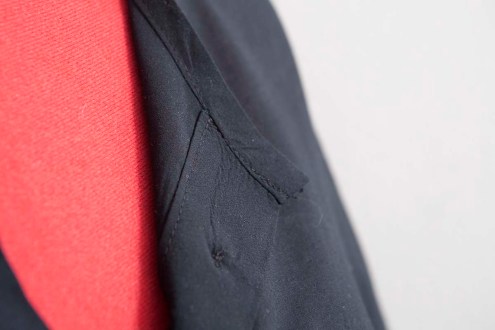
Voilà ! A très vite, j’ai encore plein de trucs à vous montrer !




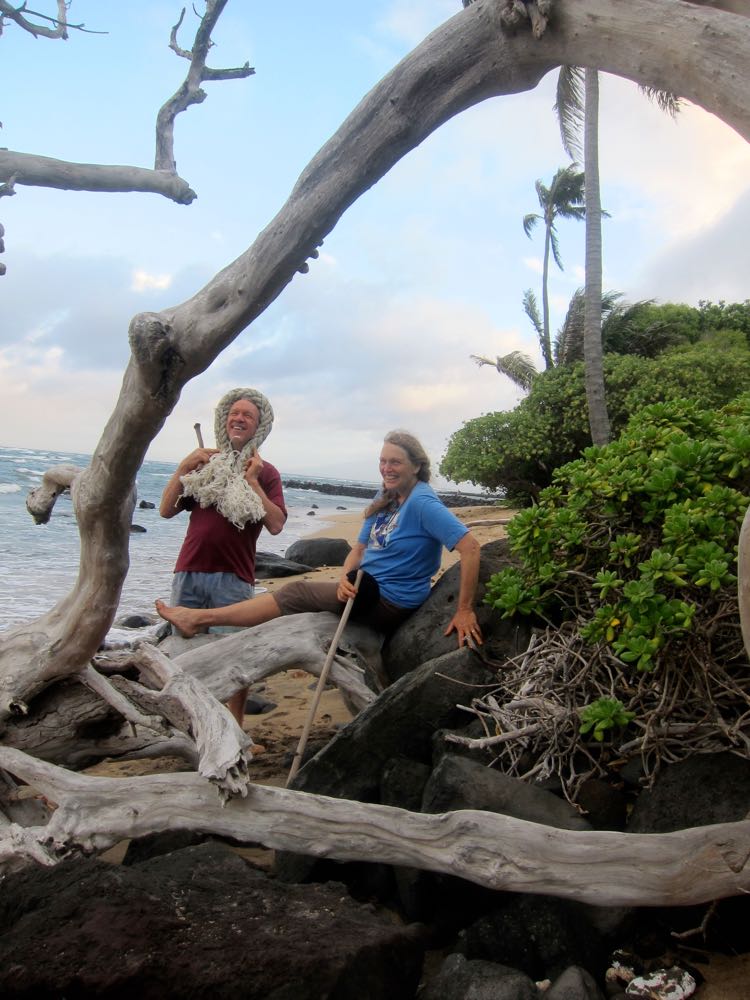
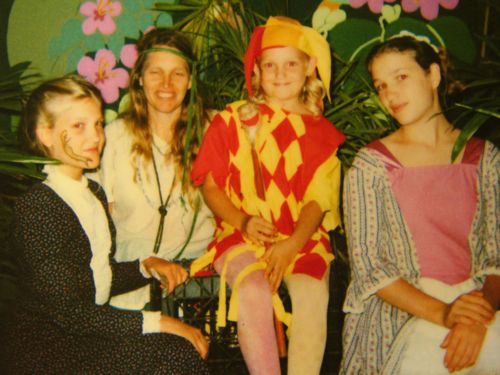

 Happy sewing!!
Happy sewing!!
 News (clockwise from top left)
Colette released a
News (clockwise from top left)
Colette released a 

